The Villa Romana del Casale, a UNESCO World Heritage Site, is a large and elaborate Roman villa near Piazza Amerina, Sicily. Excavations have revealed one of the largest collections of Roman mosaics in the world.
The villa dates from the early 4th century AD. It was built over the former villa of an older agricultural estate. Little is known about the earlier villa, but it appears to have been a large country residence probably built around the beginning of the 2nd century.
The mosaics in Villa Romana are well preserved because the villa was covered by landslides and floods. Frescos also covered the interior and exterior walls.
The villa was inhabited for at least 150 years and a village grew up around it. The villa was damaged and probably destroyed during the time of the Vandals and the Visigoths in the 5th century. The settlement was destroyed in 1160 after a landslide covered the villa. Survivors of the settlement moved to Piazza Amerina.
After that, the villa was all but forgotten so the antiquities were not scavenged for building materials by the local villages . The area was used for crops until, in the early 19th century, pieces of mosaics and some columns were found. The first professional excavations were started in 1929. A cover was built over the mosaics after more excavations were made in 1950-60. Work by the University of Rome has continued since 1970.
We started our tour in the corte porticata. This was a porticoed entrance court to the villa.
The complex to the north of the entry are the villa’s baths and gymnasium (palaestra). There was a frigidarium with cold plunge pools and a tepadarium (warm steam room).
This long room was the palaestra (training room or gymnasium). It was a public space between the thermal rooms and the villa. The floor is a mosaic of a chariot race at the Circus Maximus in Rome.
Besides being the permanent or semi-permanent residence of the owner, the villa had multiple reception rooms and spaces for managing the estate.
The villa was a single-story building, centered on the peristyle, a large courtyard which included a garden and a fountain with three basins. Almost all of the public and private rooms opened onto this courtyard.
Visitors walk through the villa on elevated walkways to view and protect the remarkable tiled floors.
The covered area around the courtyard is tiled with mosaics of wild animals.
The mosaic on the floor of this small private hall to the baths is called the Thermal Procession. The center figure is thought to be the wife of the owner of the villa.
This room may have been a winter dining room.
They believe the Hall of the Small Hunt was used as a banquet hall partly because it has formal columns at the entrance.
This room may also have been a dining room. You can still see some of the frescos that were on the walls.
The rooms with geometric mosaics are believed to be utility rooms, such as offices and antechambers.
The Great Hunt is one of the most famous mosaics in the villa. It’s a 70 yard long corridor with hunting scenes. They represent the capture and transport of wild & exotic animals to be exhibited in the circus spectacles in Rome.
Centered on this hall is the basilica which was used as a throne room and audience hall. Entrance to the basilica is through 2 columns made of pink Egyptian granite.
The floors and walls were totally covered with different kinds of marbles from all over the Mediterranean. This type of marble was considered of greater prestige than mosaics.
The apse vault was decorated with glass mosaics.
The Chamber of Orpheus has a statue of Apollo and these walls were also faced with marble. This room was probably used for banquets and musical entertainment.
This is the Sala della Dieci Ragazze – the Room of the Ten Girls. These mosaics are often called the bikini girls. It shows girls playing sports in what was actually their underwear, the usual wear for practicing gymnastics. The girl in the toga is about to crown one of the athletes.
The following rooms were part of the private apartments.
The figures in this medallion are Cupid and Psyche. This room may have been the master bedroom.
This is a scene from Homer’s Odyssey.
The mosaics in this room are various musicians and actors.
There was a fountain in this little courtyard.
The mosaics in this room are of children playing so maybe this was a children’s bedroom or school room.
The Hall of Arion was probably a living and dining room.
 The polygonal lavatory was behind the villa, near the private rooms.
The polygonal lavatory was behind the villa, near the private rooms.
Most of the mosaics are under cover but a few are still outdoors.

The size of the villa and the artwork indicate that the owner was probably a member of the senatorial class if not a member of the imperial family of the Roman Empire. The most probable owner was Lucius Aradius Valerius Proculus, a governor of Sicily from 327 to 331 and consul in 340. He organized games in Rome in 320 that became famous and perhaps are depicted on some of the mosaics found here.
After a long morning we drove to the Torre di Renda, an agriturismo – guest farm. There was a great view of Piazza Armerina, the town on the next hill.
The bus dropped us off a short hike away.
It was worth the walk! Lots of tableware means more fabulous food!
Our tour group
Another fabulous day in Sicily!





















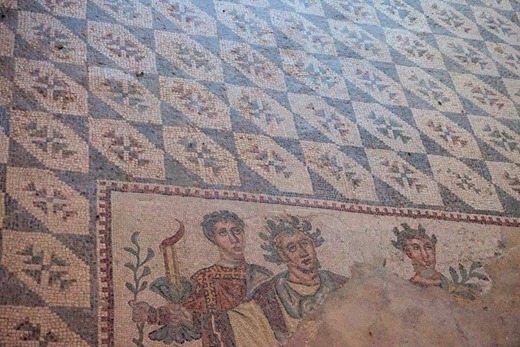























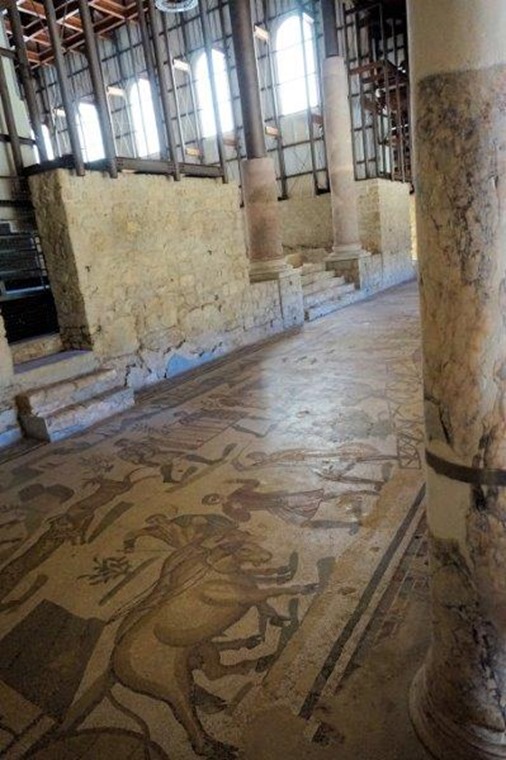

























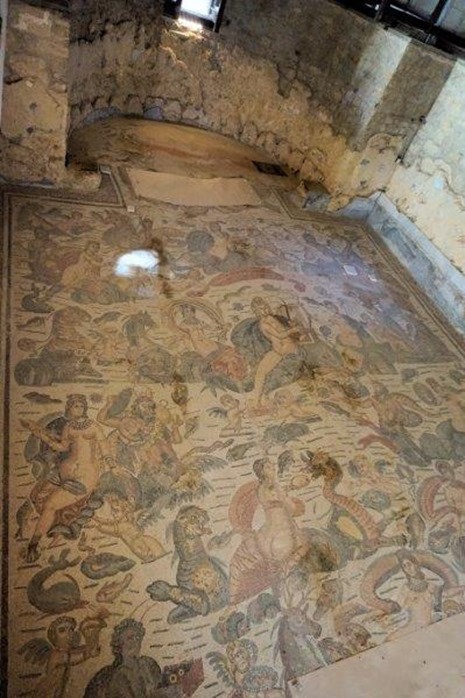
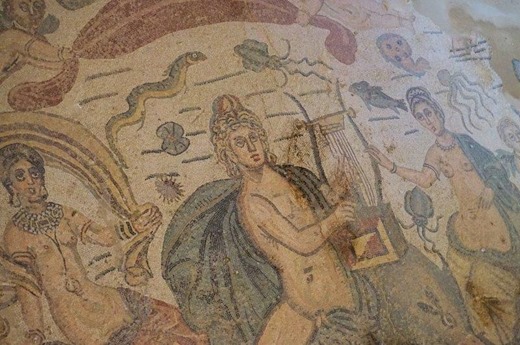


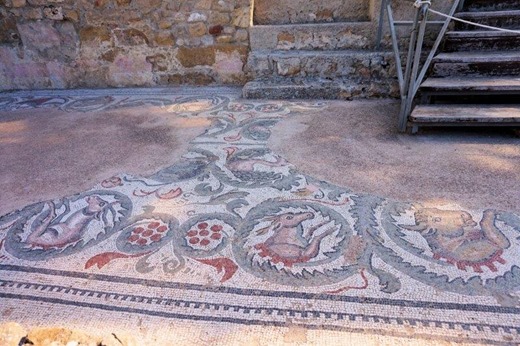




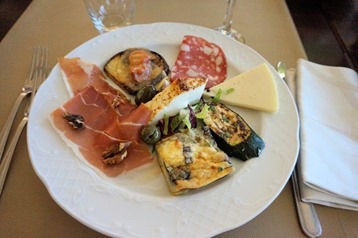



EXTRAORDINARY!! It boggles the mind to think of how long it must have taken to set all those mosaics, and how breathtaking it all must have looked in its heyday. Thank you for this fascinating virtual tour — you’ve opened up a whole new window to the world for me!
This may have been the most amazing place we saw in Sicily, but it’s hard to choose!
This also makes me want to visit Sicily – what a beautiful assemblage of mosaics!
You’d love it!